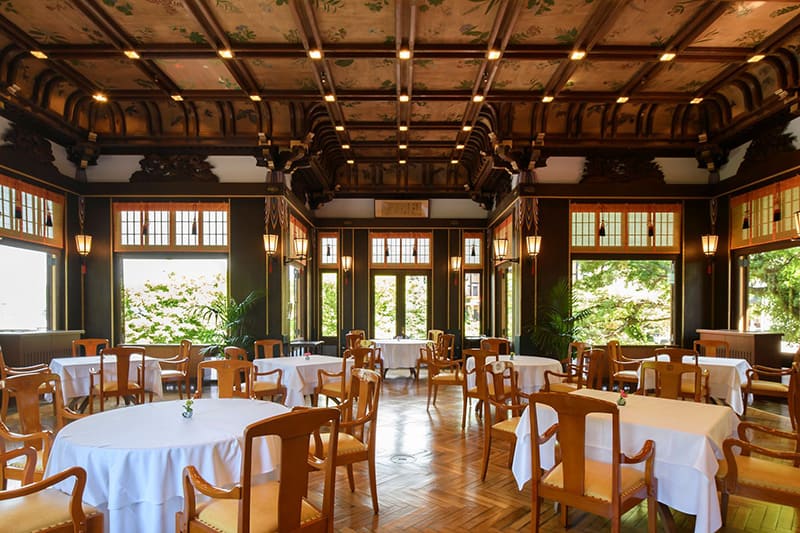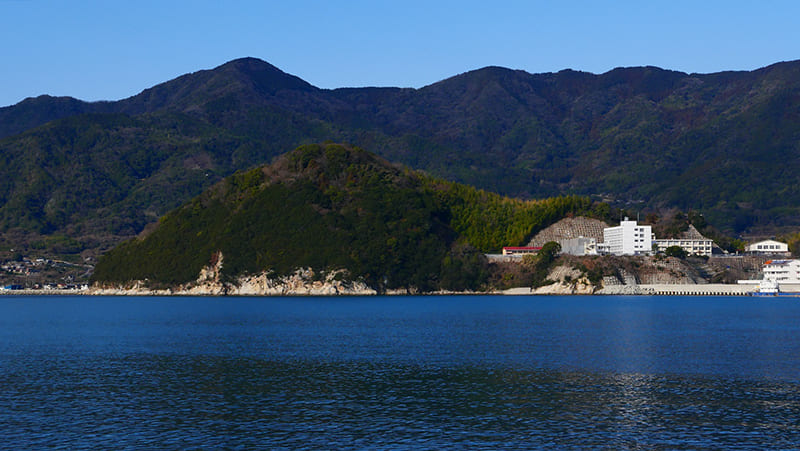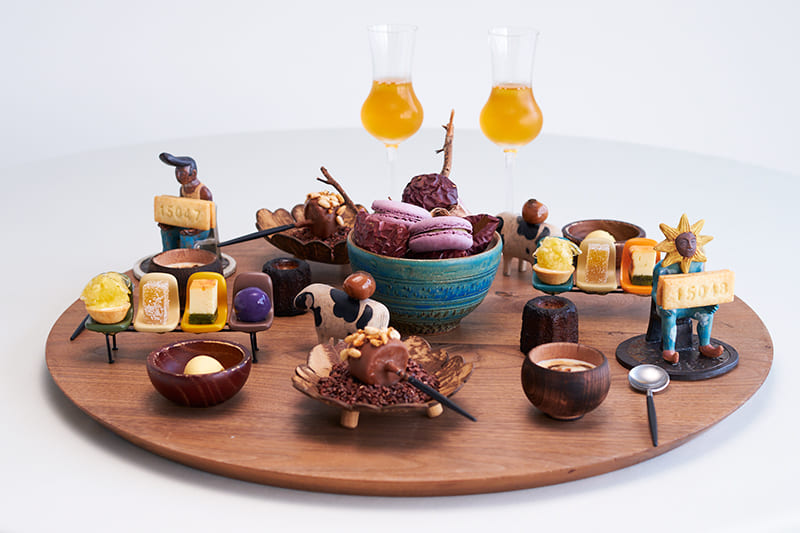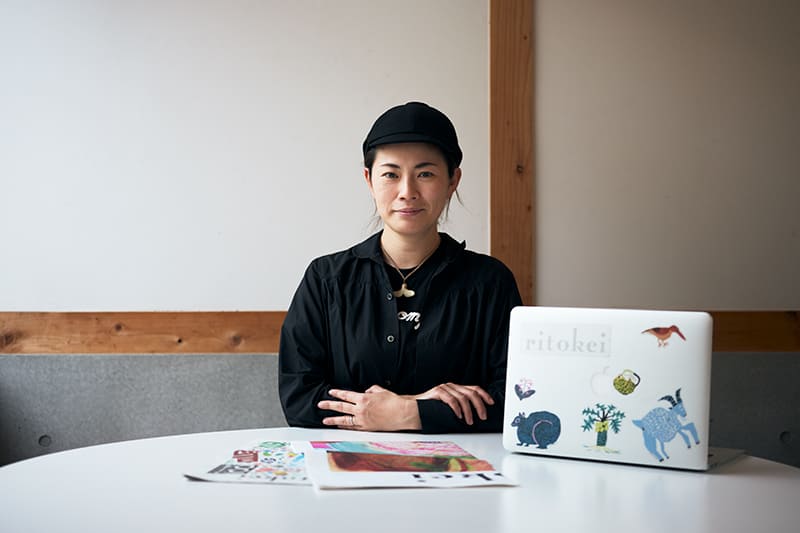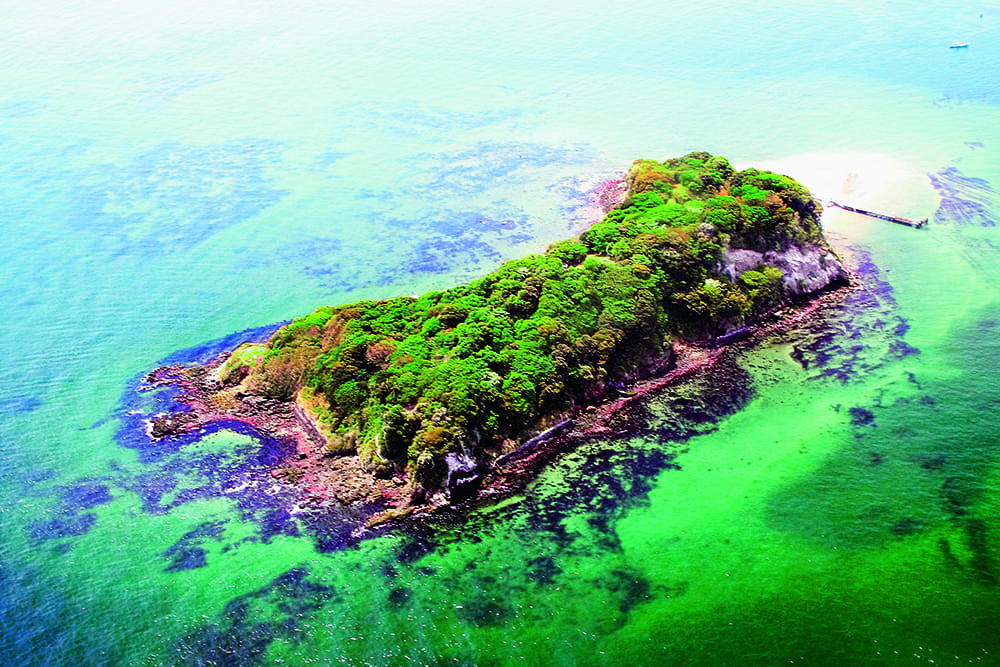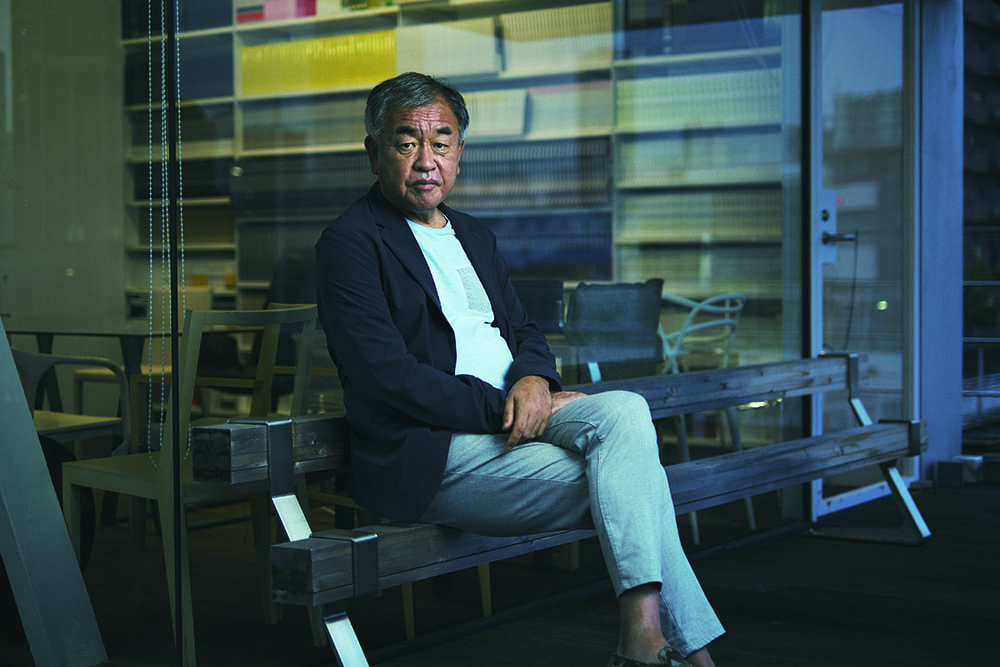November 24, 2023
Ideas and dynamism: A story of Suo Oshima
SATOYAMA CAPITALISM 2024 VOL.2
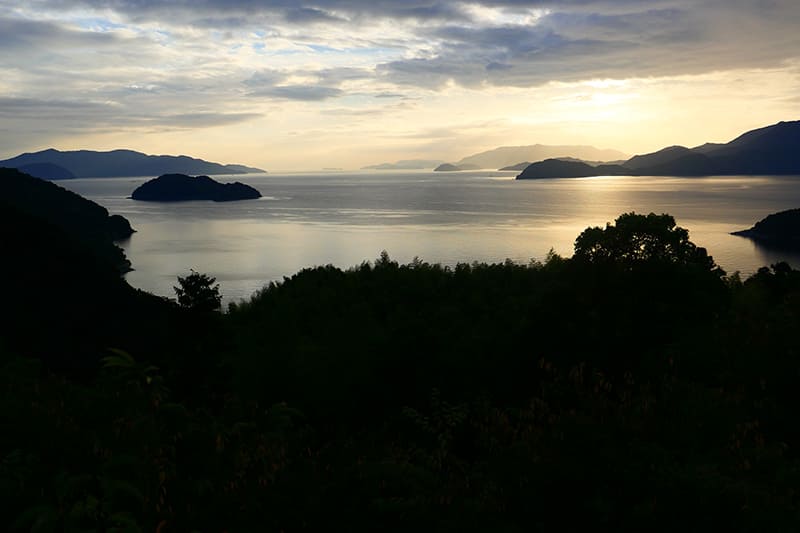
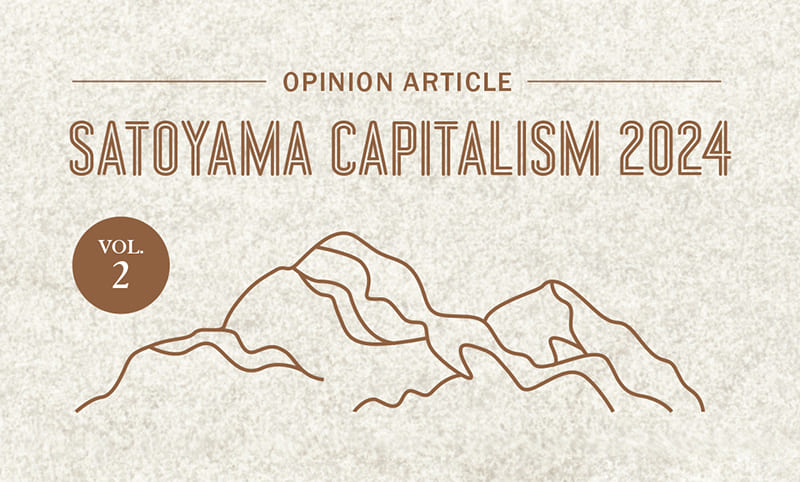
Ihad some little stumbles at the beginning of a recent trip. When I arrived at Iwakuni Airport in Yamaguchi Prefecture, I found no rental car was available, perhaps because of the post-COVID travel boom. My flight had been delayed due to rain, and I had to run to catch a train. I saw the coastal scenery of the Seto Inland Sea from the train.
When I got off at Obatake Station, at the foot of the bridge over to the island of Suo Oshima, things started to improve. A car pulled up in front of me to pick me up. It was Mr. Tadashi Matsushima of the specialty jam shop Setouchi Jam’s Garden. We crossed a kilometer-long bridge to the island and took the road around it.
I first met Mr. Matsushima in 2012. He sold handmade additive-free jam for about ¥800 ($5) a jar. It was a little pricey, but an increasing number of customers came to buy his jam from neighboring Hiroshima, a city of over 1 million people.
Suo Oshima is known as “Mikan Island” because it produces 80% of Yamaguchi’s mikan oranges. But that status has been threatened by fierce domestic competition and cheaper imported oranges pushed by the U.S. in its tariff war with Japan. The aging of the farmers and depopulation of the island did not help. For a time, mikan were thought of as baggage on the local economy.
But Mr. Matsushima had a different vision. He saw mikan as a potential high-value crop and a way to bring the island prosperity. His entrepreneurial ideas kept on flowing, started to affect people’s ways of thinking, and brought growth.
He made it possible for aging farmers to retire and let young farmers from outside inherit their farm. He developed a mail-order system for selling various island products. He revived the well-water system when the water supply stopped due to a tanker incident. He developed value-added products like fruit syrup without synthetic colors that stain the tongue, and lemon liqueur in the midst of the COVID era, and obtained a new license for brewing liquor.
His latest entrepreneurial idea is to open an inn-style hotel for the post-COVID era. He is renovating the former village headman’s big old house from the Edo Period. In the large garden, his father-in-law, a temple priest, operates heavy machinery. He has kept the lanterns and the camellia and sarsaparilla plants, and planted lemon trees around them for making liqueur. I am impressed with his respect for local culture and history, and his ingenious sensibility meshing them with entrepreneurship.
Mr. Matsushima took me to meet with two brothers — Hideyuki Kubota, a sushi chef, and Hiroshi Kubota, a carpenter — who are simply amazing at what they do. I had once had dinner at Hideyuki’s restaurant and was overwhelmed by his service and pleasant talk even without the proprietress present, and by the amazing taste of the sushi. I wanted to meet his brother Hiroshi, then, and that was the reason for my visit this time.
Mr. Matsushima and I came during the day to Hideyuki’s sushi spot, which has only a counter with eight seats. I saw a lot of cut trees in a large plot of land in the back of the restaurant. Hideyuki was washing the cutting board there, saying, “I felt that removing the scales and entrails inside the restaurant would leave a lingering smell.”
At that moment, I recalled the night I was there and ate an exquisite shrimp dish. At first glance, they looked like ordinary steamed shrimp, but they were rare shrimp not sold at the market — only for the locals. After being caught, the shrimp are laid out for a few days, then marinated with sake, dried and laid out again for a few more days. Hideyuki figures that is the right timing for serving them. The rich flavor of the shrimp suddenly came back to me, along with his passionate explanations. This is his aesthetic sensibility.
Then his brother Hiroshi returned. He turns those cut trees into “treasures of the island.” Nara (Japanese oak) and sakura (cherry) trees that were obstructions had been cut down. They become hodagi, logs on which shiitake mushrooms are grown. Cherry-wood chips are used for smoking dishes. Scrap wood and sawdust are burned in a stove for energy. Nothing goes to waste.
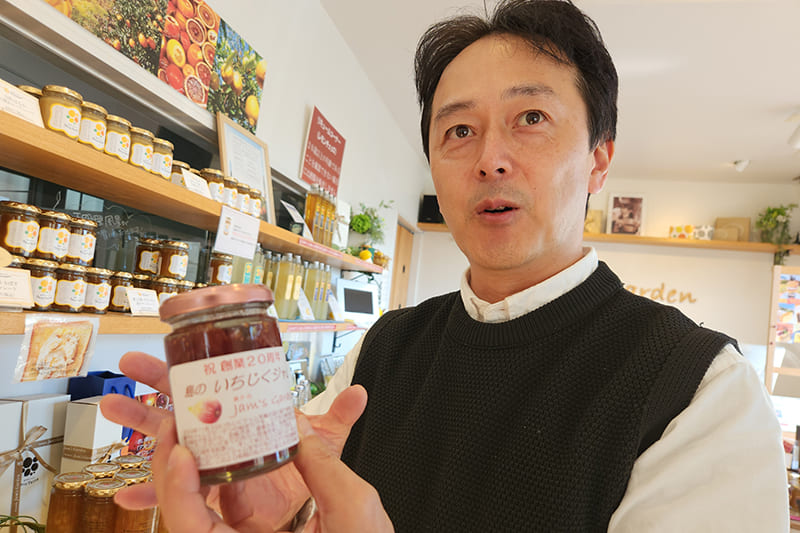
PHOTOS: KYOSUKE INOUE
In the lumberyard, there is a keyaki (zelkova) board that Mr. Matsushima is saving for a signboard for his jam shop. I also saw a piece of camphor wood over 1 meter in diameter, and a fresh fragrance rose from the cut wood.
Hiroshi worries about the recent sharp rise in energy costs. Biomass power generation has become a fad. Trees that could be used as lumber are being burned, while dependence on nuclear power plants is also increasing. His words “Use the resources around you, and only as much as you need” struck a chord with me.
Evening was approaching. I went to the best sunset spot on the island, according to the chief priest. I stood there and enjoyed the stunning view for an hour. I was impressed by the taste and volume of the Spanish mackerel sashimi and small sardine tempura for dinner. The next morning, after soaking up the morning sun on the beach, I went to the cafe in Mr. Matsushima’s store. Gorgeous crepes with strawberry slices there were invented by an aspiring female pastry chef who came from outside the island.
Mr. Matsushima recently developed a new product: a jam priced at ¥2,000 per jar. Normally, this would be considered expensive. But he said smilingly, “I let go of my limits.” Yet I was thinking, “If the price isn’t low enough to make people want to buy it, then it won’t sell.”
Mr. Matsushima continued, “Even with jams priced at ¥800 each, it was not possible to freely do what we wanted to do. Now people want real authentic things, and that has become the standard. I quit thinking about what’s not possible and focused on what’s possible to make the ultimate jam.”
There is one thing he never wavers about. He does this for the people of the island to prosper. He is committed to stimulating their prosperity and securing for future generations its natural resources.
It is precisely why Mr. Matsushima was awarded the Japan Agricultural Prize in 2021, a prize all farmers aspire to. And he won it in the Food Bridge category — a perfect category for a person who has been building bridges with food between different cultures and generations.
Mr. Matsushima’s groundbreaking work and community-building continues. In fact, I am writing this article at the new inn inspired by the old ways that he opened this summer in the converted village headman’s house.
KYOSUKE INOUE
Writer and TV director. Born in 1964, Inoue joined NHK in 1987 after graduating from the University of Tokyo. For over 30 years, he produced “NHK Special” and other documentaries and authored books. He currently is an adviser to the Sustainable Japan Network, a project of The Japan Times. The series Satoyama Capitalism 2024 will introduce readers to people who live by values other than “money first,” whom he has been covering for many years.
離島で見つけた、未来を変えるアイデアと行動力。
1987年のNHK入局後、30年以上に渡り、ドキュメンタリーを中心に番組制作に関わってきたテレビディレクター/作家の井上恭介による全6回の連載コラムの第二回目。今回は、山口県周防大島に〈瀬戸内ジャムズガーデン〉の松嶋匡史さんを訪ねた時の話である。松嶋さんと井上が出会ったのは2012年。当時、松嶋さんは完全手づくり、添加物一切なしのジャムを1個およそ800円で売り、隣県の広島などからも買いにくる客が増えていた。島で採れるみかんを農家からあえて高値で買い、かき氷のシロップや、リキュールなどを開発。また、「宿」の開業を目指し、集落の元庄屋の屋敷の改装を始めていた。
そんな松嶋さんが最近、1個2000円のジャムを開発した。高価だが島の人たちが豊かに生きるため、島の人、島の中、島の資源にこだわった末の値付けだという。松嶋さんは2021年「日本農業賞」を受賞。井上の今回のこの連載原稿は、2023年夏に開業したばかりの“元庄屋の屋敷を改装した”一棟貸しの宿で書かれている。
Return to Sustainable Japan Magazine Vol. 30 article list page

